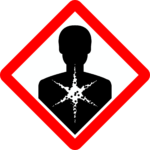New Hire Orientation Renovation
Some people may wonder what a safety professional does. I have been asked SO many times..what exactly are your as job responsibilities? The easiest thing to say is to describe OSHA compliance..however, as a dedicated practicing Safety Professional I am clearly aware how there is a lot more which goes into safety than just OSHA compliance.
Usually, unless they are family or friends, I do not tell them how I always have a million things on my mind, and sometimes it seems like I never stop identifying projects. Just for the sake of my passion for safety, it just saves a lot of time describing my profession if someone is only trying to create small talk.
But anyway, one of the projects I am working with Human Resources is, remodeling our new hire employee orientation! Within past internships and positions, I have conducted the safety portion of new hire orientation. Since this is my first time managing safety for a company and assisting with the formal orientation reconstruction, I wanted to ensure I didn’t miss any applicable topics!

After some time spent researching, I have gained insight about training topics a new hire would need to know. Since there are endless safety training topics, you can really go on and on.. Here, I will discuss programs I have found as the minimum to cover. This minimum is not considering policies, which depend on operations a facility has (example, welding or laser safety). I will write more specifics as far as what goes into each program and training techniques in future posts, so keep a look out!
Safety Topics: General Overview
Unless a safety topic is directly involved with the type of work the employee is conducting, such as possibly working with machines or being an authorized forklift operator, I would give workers awareness training.
As much as it wouldn’t bother me, I would love to go full blown in why safety is important, continuous improvement projects, working through safety concerns and anything else which randomly comes to my mind…But unfortunately I know I am only given limited time with my portion of orientation training.
I do love this time and appreciate being able to meet the new employee(s) right off the bat. I want to show as much face as possible out on the production floor and meeting as many employees as possible. This helps in creating the initial connection towards active employee engagement. (People are more likely to participate and be involved with people which have taken the time to know them on a personal level).
Anyway, company policies and company safety rules are where additional training is plugged in as far as site specific risk. General topics which all new hire employees are required to have knowledge on include:
- Safety Representative – Introduce the employee to the safety representative, and give them their contact information. Outline safety’s role to help manage and maintain a safe workplace.
- Company Safety Rules – Explain safety rules that are specific to the company. Examples may include lockout tagout, guarding, safe lifting procedures, housekeeping
- Company Policies – Explain health, safety and wellness policies of the company so workers understand the full scope of safety expectations and understand how they can protect themselves against hazards
- Training – Provide any necessary safety, environmental compliance or policy/procedural training
- This may include if you intend them being authorized in areas such as, lockout tagout, powered industrial vehicles, entering confined and permit confined spaces, respiratory safety, stormwater pollution prevention, etc.

- Potential Hazards – Job Hazard Analyses (JHA) for each position is a highly recommended best practice. Reviewing JHA’s with employees are extremely ideal to train directly on hazards to the specific job and safe work methods. If these are not created (yet), tour the work areas and discuss associated hazards.
- Emergency Procedures – Show and explain how to use emergency eyewashes and showers, first aid kits, fire blankets, fire extinguishers, fire exits, fire alarm pull boxes, and spill kits, as applicable. A company may find opportunities for improvement in having a general checklist of what to discuss on the shop floor orientation, along with a map showing where these locations are.
- Toxic Products – Identify workspaces where hazardous materials are used, stored or disposed. Provide training as necessary. As part of my facility’s emergency action plan, I am working through certifying various employees in Hazwoper so they can help clean spills.

- Safety Data Sheets (SDS) – Provide education on Hazard Communication and show where employees can access SDSs. Review the SDS for all hazardous materials to be used by the employee. Explain hazardous material labeling requirements.
- Emergency Evacuation – Review the company’s Emergency Evacuation Plan and explain the evacuation signals and procedures, point out proper exit routes and the designated assembly area for their departments
- Personal Protective Equipment (PPE) – Review the PPE program if the employee will be required to wear protective equipment. Issue appropriate personal protective equipment that must be worn as required by the work being performed.
- In Case of Injury or Illness – Review the reporting procedures in the event of an injury and/or incident
- Health and Safety Committee – Supply a copy of the facility’s telephone list with names of the Health and Safety Committee members highlighted. Identify the location of the safety bulletin board. Explain how the employee can participate in the health and safety process (reporting hazards)
- General Rights and Responsibilities – Explain worker rights and responsibilities as granted by legislation. Specific information includes reporting of accidents, reporting unsafe working conditions and a process for exercising their right to refuse unsafe work.
- Emergency Contact – Provide a list of names, addresses, phone numbers and fax numbers of the persons who must be contacted in case of emergency
Conclusion: Minimum Requirements and Best Practices
Meeting compliance standards are always the minimum starting-base in a successful safety program. As far as training, in order to have employees respond successfully in a hazardous situation at work, they need to be prepared and understand their role in mitigating risk.
Training takes time, and time costs money. It’s always important to keep in mind that safety is a cost associated with doing good business!! It looks good both for customers and employees. Myself personally, I would be more enthusiastic working for a company which I have seen them take the time to invest in my safety. In turn, I would want to be more productive and offer feedback to employers.
Ultimately, caring about employees is all about what drives a safety program! We show we care through taking the time to train workers, listen to their concerns, and address hazards to the best of our ability.

It may take awhile to build the type of safety culture prioritizing time teaching employees workplace hazards. It is absolutely costly training! But, the employer eventually pays for that cost – and then some – in injuries, worker’s compensation, lost time, and many indirect costs. Be proactive, invest in your employees learning safe work practices upon initial hiring.
Feedback?
Did you have to convince company executives to give you more time for your safety orientation? How many employees are in your new hire sessions? Have you conducted any activities within orientation?
Comment, subscribe or reach out to me directly if you have a suggestion or question. Thank you for reading!
Best,
Works Cited
“Employee Orientation Checklist.” Canadian Centre for Occupational Health and Safety. Canadian Centre for Occupational Health & Safety 2020. www.ccohs.ca/oshanswers/hsprograms/orientation.html . Date Accessed 1/13/20.
“Health & Safety Orientation Guide for Employers.” WorkSafe NB. WorkSafe NB, October 2011. www.worksafenb.ca/media/1227/worksafenborientationguide_e-1.pdf. Date Accessed 1/14/20.


